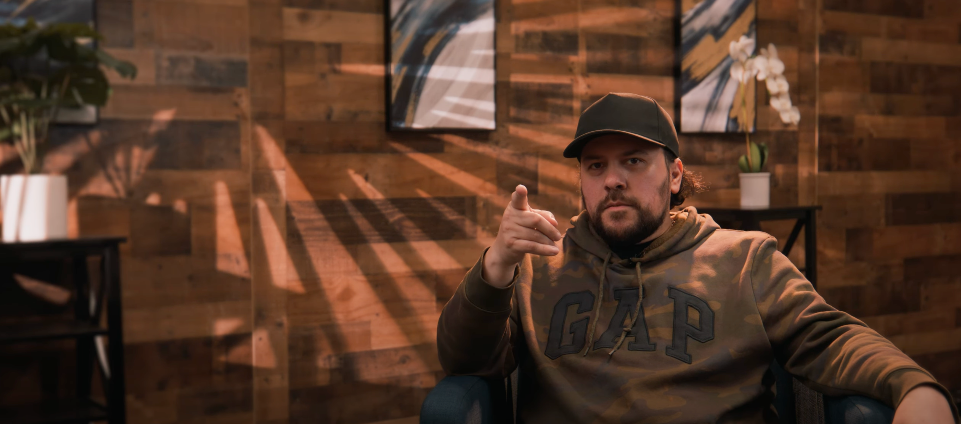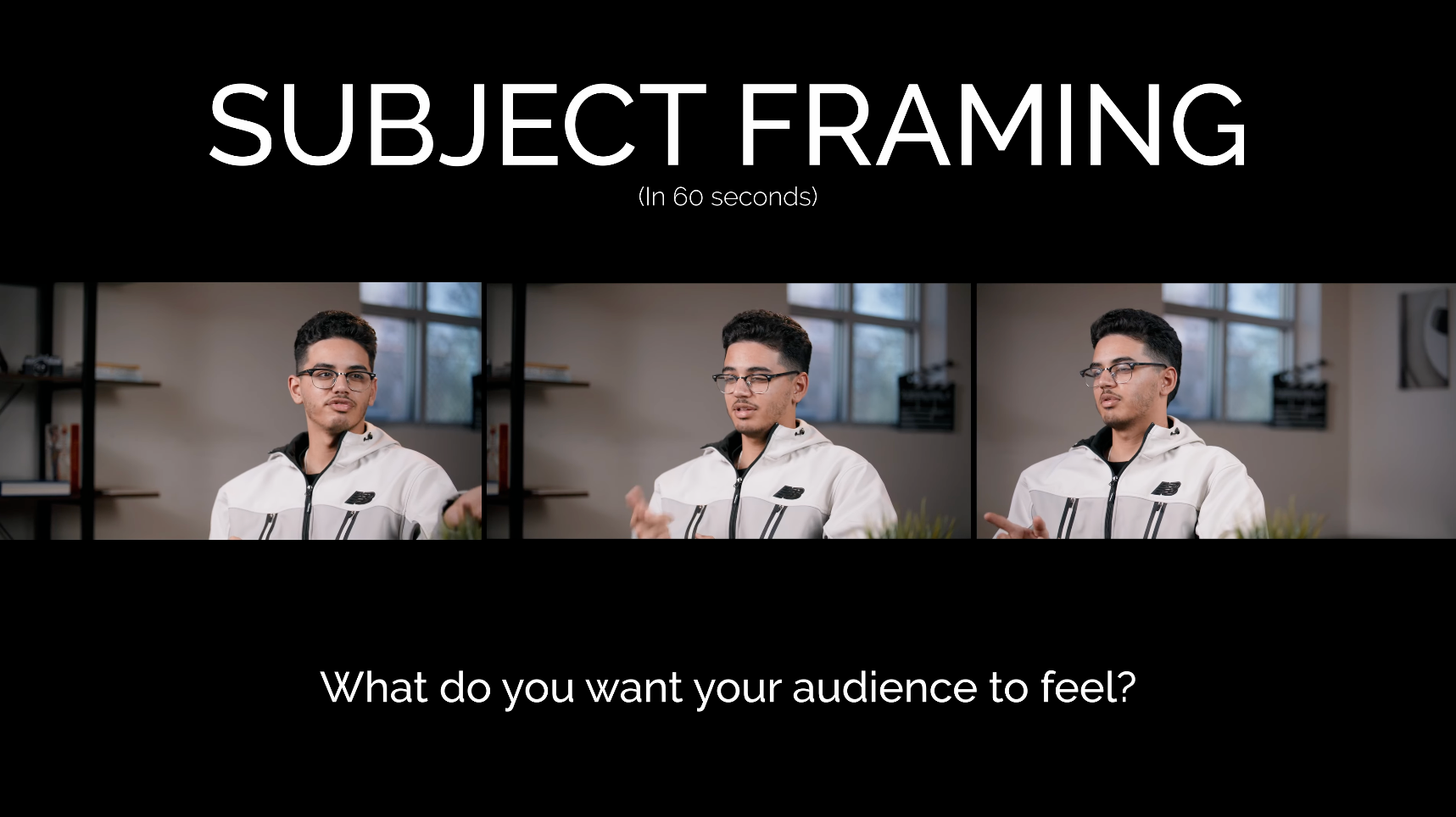You know what’s funny? People will typically sit down for an interview and say, “Oh, the lights are so hot!”
Spoiler: They’re not.
These lights don’t emit heat—at least not the way people think. They’re LEDs. No heat blasting on you, no sweat caused by the gear. If you’re sweating, that’s nerves, not the lights.
When we set up an interview, like the one we did with Sary for the documentary, here’s what the whole setup usually looks like:
-
Key light – your main light, illuminating the subject and the cornerstone of creating seperation between your subject and the background
-
Fill light – softens those shadows, keeps things balanced.
-
Background light – adds texture and a little pop behind you.
Back light – Pointed directly at the subject’s back to create more seperation between the subject and the background. Keep things looking as natural as possible but if you can, try to have your subject visibily brighter than the background without your subject “looking lit”.
-
Microphone – clean audio is just as important as the visuals. Try not to skimp on this either. Sure, if your content is going on social media you might think since most people watch videos on mute then the audio isn’t that important…but it is! Often times it’s the sound quality that keeps people ingaged more than a pretty frame. Sound is 50% of the viewing experience; Don’t ignore it.
-
Two cameras – one wide, one tight. Gives us options and keeps things dynamic. Smoothing out takes and getting rid of the errs and umms looks much more natural when you change angles.
-
Bonus tip: Shoot from the shadow side- the side opposite of your key light. Shooting on the shadow side is typically much more flattering and give a better sense of shape and depth to your subject. Next time you watch your favorite movie or show, pay attention to how the camera is more often times than not filming from the shadow side of the subject and the brighter lights are coming from behind them.
-
It’s pretty simple when you think about it. This is what we do—it’s your basic interview setup.
Funny thing though: When you nail the basics, even the simplest shot can look polished, cinematic, and professional.
And that’s the point. When people ask me, “What do I need to get a nice interview shot for my business?” the answer is: it doesn’t have to be complicated. It doesn’t even have to be the most expensive equipment in the world. Sure, these lights aren’t cheap, but the principle is always the same:
-
Key light
-
Fill light
-
Background light
-
Whatever camera you’ve got
That’s the formula.


